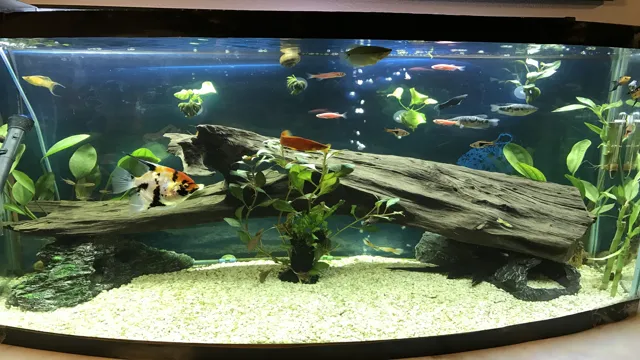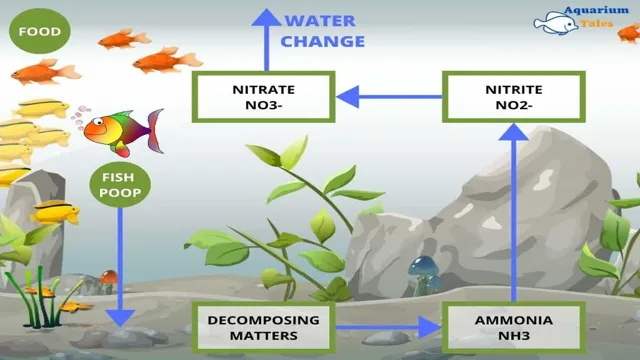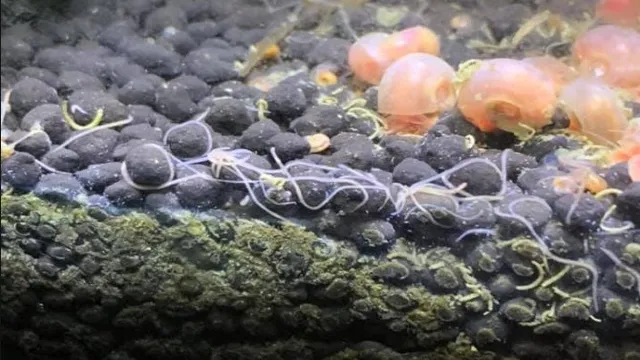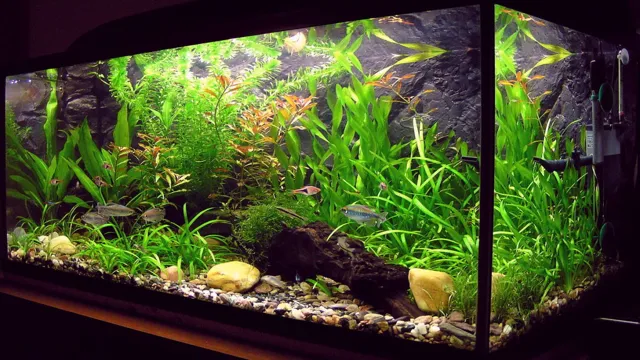How to Generate Water from an Aquarium: DIY Tips and Tricks

Having an aquarium in your home is a delightful way to spruce up your space and add a touch of peacefulness to your everyday life. Owning an aquarium is a responsibility, as you need to ensure the water is clean, safe, and healthy for your fish to thrive in. One of the essential steps to achieve this is by generating fresh water from your aquarium.
In this blog, we’ll provide a complete step-by-step guide on how to generate water from your aquarium and ensure the safety and well-being of your aquatic friends. Whether you’re new to aquarium maintenance or a seasoned pro, our guide will have something for everyone. So, let’s dive in and learn how to generate water from an aquarium!
Understanding the Water Cycle in an Aquarium
If you’re looking to generate water from your aquarium, it’s important to first understand the water cycle in your tank. The water in your aquarium is constantly moving through a cycle of evaporation, condensation, and precipitation. As the water evaporates, it creates humidity in the air which then condenses on the sides of the tank and eventually falls back into the water as precipitation.
This process helps to regulate the temperature and keep the water clean by removing waste and excess nutrients. To generate more water, you can increase the humidity in the air by adding a lid to your tank or using a humidifier nearby. Additionally, regularly topping off the water in your tank with clean, fresh water will also help to maintain a healthy water cycle and keep your aquarium thriving.
Different Types of Aquarium Filters
Aquarium Filters Understanding the water cycle in your aquarium is essential to maintaining a healthy environment for your fish. This cycle starts with filtering the water to remove debris and waste products. There are various types of aquarium filters available, each with its unique function.
For instance, mechanical filters physically remove particles and waste material from the water. Chemical filters absorb impurities and toxins from the water while biological filters foster the growth of beneficial bacteria to break down harmful compounds. Understanding the attributes of each filter type and their compatibility with your aquarium is crucial in creating a filtration system that caters to the specific needs of your aquatic pets.
It is essential to consider factors such as the aquarium size, fish species, and feeding habits when choosing the right type of filter. By utilizing the right filter, water conditions in your aquarium can be optimized, minimizing the risk of fish diseases or toxicity, and providing an ideal habitat for your fish to thrive.

How Aquarium Filters Work
Aquarium Filters Understanding the water cycle is crucial when it comes to maintaining a healthy aquarium ecosystem. Without a proper filtration system, the water in your aquarium can become toxic to the fish and plants living within it. Aquarium filters work by pumping water through a series of media that removes harmful substances, such as ammonia and nitrite, while also providing a home for beneficial bacteria.
These bacteria break down waste products and convert them into less toxic substances, like nitrate, which can be safely removed through regular water changes. Think of the filter as a liver for your aquarium – it cleanses and purifies the water so that the inhabitants can thrive. As such, it’s essential to select the correct filter for your tank size and the type of fish and plants that you have.
By providing a clean and healthy environment, your aquarium can become a beautiful centerpiece and a source of joy and relaxation.
Choosing the Right Filter for Your Aquarium
When it comes to keeping your aquarium healthy and clean, choosing the right filter is crucial. Filters help to remove waste, excess food, and other debris from the water in your aquarium, creating a healthy environment for your fish and other aquatic life. There are several different types of filters to choose from, including hang-on-back filters, canister filters, and sponge filters.
The type of filter you choose will depend on the size of your aquarium, the type of fish you have, and your personal preferences. To generate clean water from your aquarium, it’s important to choose a filter that is properly sized for your tank and that can handle the needs of your aquatic inhabitants. With the right filter in place, you can enjoy clear, healthy water and happy, thriving fish.
Factors to Consider when Choosing a Filter
When it comes to setting up an aquarium, choosing the right filter is crucial for the health and well-being of your aquatic pets. There are various factors that you need to consider when selecting a filter for your aquarium. One of the most important things to keep in mind is the size of your tank as this will determine the flow rate and capacity of the filter needed.
Additionally, the type of fish and other aquatic creatures that will reside in your aquarium will also affect your filter choice. If you have a heavily stocked tank, you might need a filter with a higher flow rate, whereas a lightly stocked tank may require a lower flow rate. Other factors to consider include the type of filtration (mechanical, biological, or chemical), ease of maintenance, and noise level of the filter.
Keep in mind that investing in a high-quality filter can make all the difference in maintaining a clean and healthy aquarium environment for your pets.
Types of Filters Suitable for Different Aquariums
When it comes to setting up an aquarium, choosing the right filter is one of the most important decisions you’ll make. The type of filter you choose will depend on the size of your tank, the number and type of fish you have, and several other factors. But don’t worry, there are plenty of options available to suit any setup.
For smaller tanks, a hang-on-back or sponge filter may do the trick, while larger setups may benefit from a canister or power filter. If you have particularly sensitive fish or live plants, a fluidized bed filter may be the way to go. It’s important to do your research and invest in a quality filter that will keep your aquarium clean and healthy for your fish.
So, take your time, weigh up your options, and choose the right filter for your aquarium setup.
Proper Maintenance of Aquarium Filters
When it comes to aquarium filters, choosing the right one can make a huge difference in maintaining the cleanliness and health of your tank. There are a variety of options available, including power filters, canister filters, and sponge filters. The best choice for your aquarium will depend on the size of your tank, the type of fish you have, and your personal preferences.
It is important to do some research and consult with a professional to ensure that you are making the best choice for your unique setup. Remember, investing in a high-quality filter will not only improve the appearance of your tank but also the overall health of your fish.
Water Change and Maintenance
One of the most important components of keeping a healthy aquarium is regular water changes and maintenance. Not only does changing the water help to remove harmful bacteria and toxins, but it also assists in maintaining a healthy balance of pH, ammonia, and nitrate levels. But where does one generate new water from when conducting a water change? There are a few options available, depending on your preference and the needs of your tank.
One option is to use tap water and treat it with a water conditioner to remove any harmful chemicals, such as chlorine or chloramines. Another option is to use reverse osmosis (RO) water, which has been filtered to remove impurities such as metals and minerals. However, keep in mind that RO water can also remove beneficial minerals, so it is important to use a supplement to replenish them.
Ultimately, the choice of water source will depend on the specific needs of your tank and the type of fish or plants inhabiting it. Regular water changes and maintenance are essential for the health and longevity of your aquarium, and by choosing the right water source, you can ensure that your aquatic pets thrive.
Frequency of Water Changes
Maintaining the perfect environment for our fish is vital, and water change plays a crucial role in making it happen. The frequency of water changes we need to carry out depends on different factors like the size of the aquarium, the type and number of fish, and the filtration system we use. As a rule of thumb, we should aim to replace 10-15% of the tank water every 1-2 weeks.
However, suppose we have a smaller tank with a high bio-load or an overstocked one. In that case, we may need to change the water more frequently to ensure that the water quality remains optimal. Similarly, if we have a more extensive aquarium, we can reduce the frequency of water changes to once every month.
Whatever the case may be, consistency in water changes is critical to maintain a healthy aquarium. Additionally, it’s not just about replacing the water; we must also clean the substrate and filters regularly to remove trapped debris and harmful bacteria. With regular maintenance and water changes, we can keep our fish happy and healthy, just like they deserve.
How to Conduct a Water Change
Performing a proper water change is essential in maintaining a healthy aquatic environment for your fish and other aquatic creatures. Before you start the water change process, ensure that you have all the necessary equipment, such as a siphon or aquarium vacuum, a clean bucket, and water conditioner to remove any harmful chemicals. First, use the siphon or vacuum to remove old water and any debris, making sure not to disturb the substrate too much.
Aim to replace about 20-30% of the old water with fresh, dechlorinated water. While doing so, you can also clean the filter pads or cartridges and check other equipment like heaters, thermometers, and lighting. Don’t forget to use a thermometer to ensure the new water is at the same temperature as the current water to prevent any shock to your aquatic pets.
Once everything is taken care of, dispose of the old water properly, rinse all the equipment used, and refill your tank. By performing routine water changes, you can keep the aquarium water clean and clear and reduce the risk of any health issues for your aquatic pets.
Conclusion and Final Thoughts
In conclusion, generating water from an aquarium may seem like a daunting task, but with a few simple steps, anyone can do it! Start by ensuring your aquarium is clean and well-maintained, then collect the water using a siphon or bucket. Allow the water to settle and remove any debris, then filter it through a high-quality filter. Finally, replenish the necessary minerals and nutrients to ensure the water is healthy and safe for your aquatic friends.
With a little patience and some basic knowledge, you’ll soon be able to generate water from your aquarium like a true pro. So go ahead, dive in and make a splash!
FAQs
1. How can I generate water from my aquarium? A: There are a few ways to generate water from your aquarium. You can use a water changer or siphon to extract water from your tank, or you can use a reverse osmosis filter to purify tap water and make it safe for your fish. 2. What is the best method to generate water for my aquarium? A: The best method to generate water for your aquarium will depend on your individual needs, budget, and preferences. Using a reverse osmosis filter is typically the most effective way to generate pure water, but it can also be more expensive. 3. Can I generate water for my aquarium using rainwater? A: Yes, rainwater can be used to generate water for your aquarium after going through a filtration process to remove any contaminants. However, be mindful of the pH levels and mineral content of the rainwater, as they can cause issues for your tank’s ecosystem. 4. How often should I generate new water for my aquarium? A: It is recommended to generate fresh water for your aquarium at least once a week. This will help maintain water quality and keep your fish healthy. 5. What is the ideal temperature for the generated water in my aquarium? A: The ideal temperature for generated water in your aquarium should match the current temperature of your tank water to avoid shocking your fish. It is recommended to use a thermometer to ensure the water temperature is consistent. 6. Is it safe to generate water directly from the tap for my aquarium? A: It is not recommended to use tap water directly for your aquarium since it may contain harmful chemicals like chlorine and heavy metals. It is best to use a water conditioner or reverse osmosis filter to remove these contaminants. 7. Can I generate saltwater for my marine aquarium? A: Yes, you can generate saltwater for your marine aquarium by using a salt mix specifically designed for aquarium use. Follow the instructions carefully to ensure the proper salinity level is achieved.






